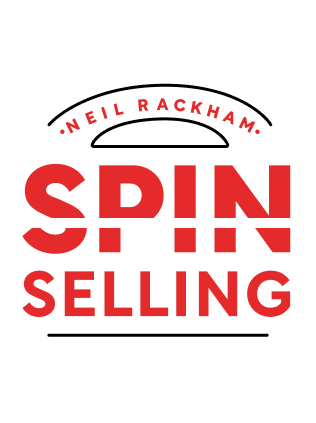

This article is an excerpt from the Shortform summary of "Spin Selling" by Neil Rackham. Shortform has the world's best summaries of books you should be reading.
Like this article? Sign up for a free trial here .
What are major sales, and how do they change your approach in the SPIN selling model? Are major sales different than other sales?
Major sales are slightly different, since they require more time and effort and a stronger relationship with customers. You can apply your knowledge of the SPIN selling method to the major sales you make in your career.
What Are Major Sales?
Major sales are sales that require a more sophisticated interaction between sales rep and customer than is needed in small sales because they’re different from small sales in key ways:
Length of the Selling Cycle
Small sales: Sales often can be handled with one call in which the customer buys on the spot. The salesperson may push hard to refute objections and close successfully. This works if it’s a one-time interaction where establishing a good relationship isn’t critical. But if the customer delays a decision, resentment created by the pressure tactics can be difficult for the sales rep to overcome in a subsequent interaction. Further, the power of a strong sales pitch wanes in a few days.
Major sales: In contrast, a major sale often requires making many sales calls to a customer over months. Since the customer doesn’t make a decision on the first call, pressure tactics that create resentment won’t work and might kill the sale by making it impossible for the sales rep to establish an ongoing relationship. In major or multi-call sales, customer deliberations occur between calls in the rep’s absence.
Size of the Customer’s Commitment
Small sales: In a small sale, since the customer isn’t spending a lot of money, the rep doesn’t need to strongly emphasize the value of the product to the customer to get him to buy.
Major sales: Making a large buy is a bigger decision for the customer. The sales rep must heighten the perceived value in the product or service. In fact, increasing the perceived value is a critical selling skill in larger sales.
The Ongoing Relationship
Small sales: In a small sale, the sales rep and customer typically interact only once; they don’t develop a longer-term relationship.
Large sales: These sales require a long-term relationship with the customer for several reasons. There will be multiple calls to close the sale, and the rep will want to generate future sales with the same customer. In addition, there are usually follow-up needs, such as installation and support. As sales get bigger, the customer’s feelings toward the salesperson become a bigger factor—the person and product become inseparable to the customer. Because the psychology of a large sale is different, the rep must employ a different selling style.
The Risk of Mistakes
Small sales: When the purchase is small, the customer doesn’t worry much about losing money if it doesn’t work out. The loss isn’t big and others in the company aren’t likely to find out the deal was bad. Similarly, most people are willing to take a chance on buying a small gadget because the loss and embarrassment aren’t great if it turns out to be useless, unlike buying a car that turns out to be a lemon.
Large sales: In contrast, customers are extremely cautious about making large buys; caution increases as price increases, as does the fear of making a public mistake (large purchases involve more people and approvals).
In Major Sales, Questions Drive Success
Questions are crucial to success in many types of interactions besides sales—for instance, negotiations, management interactions, performance interviews, and group discussions. The more questions you ask, the more likely you are to meet your objectives.
There are different types of questions, some of which are more effective than others. Sales training has emphasized two types—open and closed questions—dating back to at least the 1920s.
Closed questions are directive and usually elicit a “yes” or “no” answer—for example, “Have you purchased new equipment in the last five years?” Closed questions are less engaging, which can make them useful in dealing with long-winded customers, or when you have little time.
Open questions are non-directive and encourage an in-depth answer—for example, “Can you tell me more about your business?” or “What’s your biggest concern?” They’re effective at eliciting information because they get the customer talking. Sometimes, you learn something you didn’t expect.
However, the research on which this book is based found no correlation between using either open or closed questions and sales success. Researchers found no benefit for one type over the other in major sales calls, although sales training has long emphasized the importance of asking mostly open questions instead of closed questions.
A Better Approach to Major Sales
Researchers found that successful reps handled the investigating stage differently. Rather than focusing on asking open and closed questions in large sales, they asked four different types of questions in a sequence. These successful reps’ investigating questions can be described as the SPIN sequence, which is explained in detail throughout this summary. Here’s an overview:
1) S-Situation questions: Start by asking fact-finding and background questions, such as
“What do you see as the company’s biggest growth opportunities?” Asking too many of these questions can impose on the customer’s time and patience, so use them judiciously.
2) P-Problem questions: Once you understand the customer’s situation, ask questions that explore problems or issues your product or solution can solve—for instance, “Are you concerned about meeting your clients’ quality standards with your aging equipment?” Less experienced reps may not ask enough of these questions.
3) I-Implication questions: Asking good situation and problem questions may be enough to win a small sale. However, you need to go further in large sales and ask a more sophisticated question that explores the implications or ramifications of a customer’s problem—for example, “How will this affect your fourth-quarter results?”, or “What will this mean for your biggest customer?” The point is to underscore a problem’s significance, and create a sense of urgency for solving it. These are more difficult questions to frame, even for experienced salespeople.
4) N-Need-payoff questions: These questions lead the customer to articulate the benefits of your product or solution. For example, you might ask, “How useful would it be if we could increase your output by 10%?”, or “How would being able to reduce errors help you?” Need-payoff questions contribute strongly to sales success. Top reps ask these questions 10 times more often than average reps.
Asking SPIN questions is the best way to use the investigating phase of a sales call. Chapter 4 examines in detail how you can use them to improve your success in major sales.
Major sales take a lot of time and effort, and it’s worth it to do things right. SPIN selling can help you improve on making major sales.

———End of Preview———
Like what you just read? Read the rest of the world's best summary of Neil Rackham's "Spin Selling" at Shortform .
Here's what you'll find in our full Spin Selling summary :
- What the SPIN in SPIN Selling stands for
- How to demonstrate real value to the person you're selling to
- How to get commitment from your customer to close the sale fast






